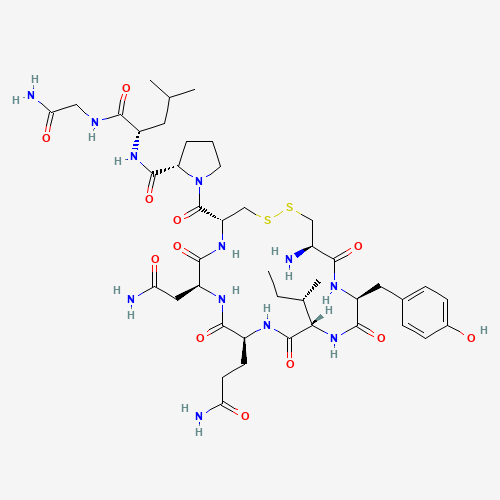The inner workings of happiness and how to create more of it
We’ve all felt sad at some point in our lives. Sadness presents itself in many forms: from the nagging feeling that life just isn’t going well to the emotional or even physical pain you experience when a friendship or relationship ends. But it tends to be balanced out by the feeling of happiness. Whether you think of happiness as the calming notion that things are right in your life, or associate it with having strong friendships and relationships, happiness can be defined as a state of joy, fulfillment, contentment, and satisfaction with life.
We all most likely know what happiness feels like, but what actually creates it? What neurological processes result in our feeling happy at certain times as opposed to others? I set out on a journey to find out the science behind happiness, and how we can control and create it. First, we’ll go through the chemicals and regions of the brain involved, and then we’ll delve into how you can spur the chemical reactions that increase your happiness.
First, there are four chemicals involved in the sensation of happiness: Dopamine, serotonin, endorphins, and oxytocin (1).
One of the chemicals is dopamine. You’ve most likely heard of this one: whether it’s people lamenting their social media addiction or their sweet tooth, dopamine is the culprit as it is the instant reward chemical. Once you eat ice cream, receive a like on your post, or complete a task, you’ll get an immediate surge of dopamine that excites your neurons, the cells in the brain. Dopamine is more of a short-term happiness-based chemical, but it creates the sensation of happiness nonetheless.
Next, there’s serotonin. This chemical is linked to pride, displays of loyalty, and almost all social interactions. When people are kind to you or you feel socially secure, serotonin increases in concentration and permits interneuronal communication, as it acts as a neurotransmitter. However, while serotonin is correlated with happiness, scientists still have many questions regarding the specific mechanisms (1).
Next, endorphins. These are mainly released in response to pain. They’re more short-term happiness chemicals and create things like the phenomenon of runner’s high (the euphoric feeling that you experience after running or intense exercise). They help us push through pain and are a large part of the reason people exercise for stress and improved mood (1). They are a hormone and activate different receptors on nervous system cells to create a happy feeling through exciting neurons.
Last up: Oxytocin. This is the connection-based happiness chemical. Oxytocin levels increase when you hug others and generally exhibit love, trust, and have positive relationships. It is long-term and tends to help people who are interested in the long game of happiness (1). You can’t make that happen overnight. As they are all neurotransmitters, Oxytocin works similarly to serotonin and dopamine: by exciting neurons.

Now, regions of the brain. Several of them are activated by happiness, as proven by a study which involved taking MRI scans of the brains of individuals experiencing happiness, but the most stimulated ones are the precuneus, left prefrontal cortex, and left insula (2). Scientists are still researching this, but the precuneus, when it has more gray matter (neurons and glial cells: two important types of cells in the brain), correlates to increased happiness (3). Additionally, the insula and left prefrontal cortex are both areas of the brain that respond to basic emotions including happiness, sadness and pain (4, 5). There is not much knowledge about how the chemicals and regions of the brain are connected – all of the happiness chemicals are stored and work in different regions of the brain.

So, what can you do to feel happier? Generally, you should increase the production of the four happiness chemicals. Completing tasks and working toward goals will increase dopamine, while having good relationships will increase serotonin and oxytocin. Exercise and laughing will increase endorphins. The gist of it is: work towards goals, cultivate strong relationships, and workout. (6).
Though we may not know much about it, happiness is mostly in our control. As we learn more about the science behind happiness, the better equipped we become to increase it in our lives. We have many questions yet to answer: Are there other chemicals involved? Why are certain regions specifically linked with happiness? What do those regions do? Hopefully researchers will have more answers in the future. In the meantime, stay happy.
Bibliography:
- 4 brain chemicals that make you happy – research. Happyfeed. (n.d.). Retrieved January 18, 2022, from https://www.happyfeed.co/research/4-brain-chemicals-make-you-happy
- Heidi Moawad, M. D. (2020, November 14). How the brain processes emotions. Neurology live. Retrieved January 18, 2022, from https://www.neurologylive.com/view/how-brain-processes-emotions
- Sato, W., Kochiyama, T., Uono, S., Kubota, Y., Sawada, R., Yoshimura, S., & Toichi, M. (2015). The structural neural substrate of subjective happiness. In Scientific Reports (Vol. 5, Issue 1). Springer Science and Business Media LLC. https://doi.org/10.1038/srep16891
- Suardi, A., Sotgiu, I., Costa, T., Cauda, F., & Rusconi, M. (2016). The neural correlates of happiness: A review of PET and fMRI studies using autobiographical recall methods. In Cognitive, Affective, & Behavioral Neuroscience (Vol. 16, Issue 3, pp. 383–392). Springer Science and Business Media LLC. https://doi.org/10.3758/s13415-016-0414-7
- Uddin, L. Q., Nomi, J. S., Hébert-Seropian, B., Ghaziri, J., & Boucher, O. (2017). Structure and Function of the Human Insula. In Journal of Clinical Neurophysiology (Vol. 34, Issue 4, pp. 300–306). Ovid Technologies (Wolters Kluwer Health). https://doi.org/10.1097/wnp.0000000000000377
- Alexander, R., Aragón, O. R., Bookwala, J., Cherbuin, N., Gatt, J. M., Kahrilas, I. J., Kästner, N., Lawrence, A., Lowe, L., Morrison, R. G., Mueller, S. C., Nusslock, R., Papadelis, C., Polnaszek, K. L., Helene Richter, S., Silton, R. L., & Styliadis, C. (2021). The neuroscience of positive emotions and affect: Implications for cultivating happiness and wellbeing. In Neuroscience & Biobehavioral Reviews (Vol. 121, pp. 220–249). Elsevier BV. https://doi.org/10.1016/j.neubiorev.2020.12.002

